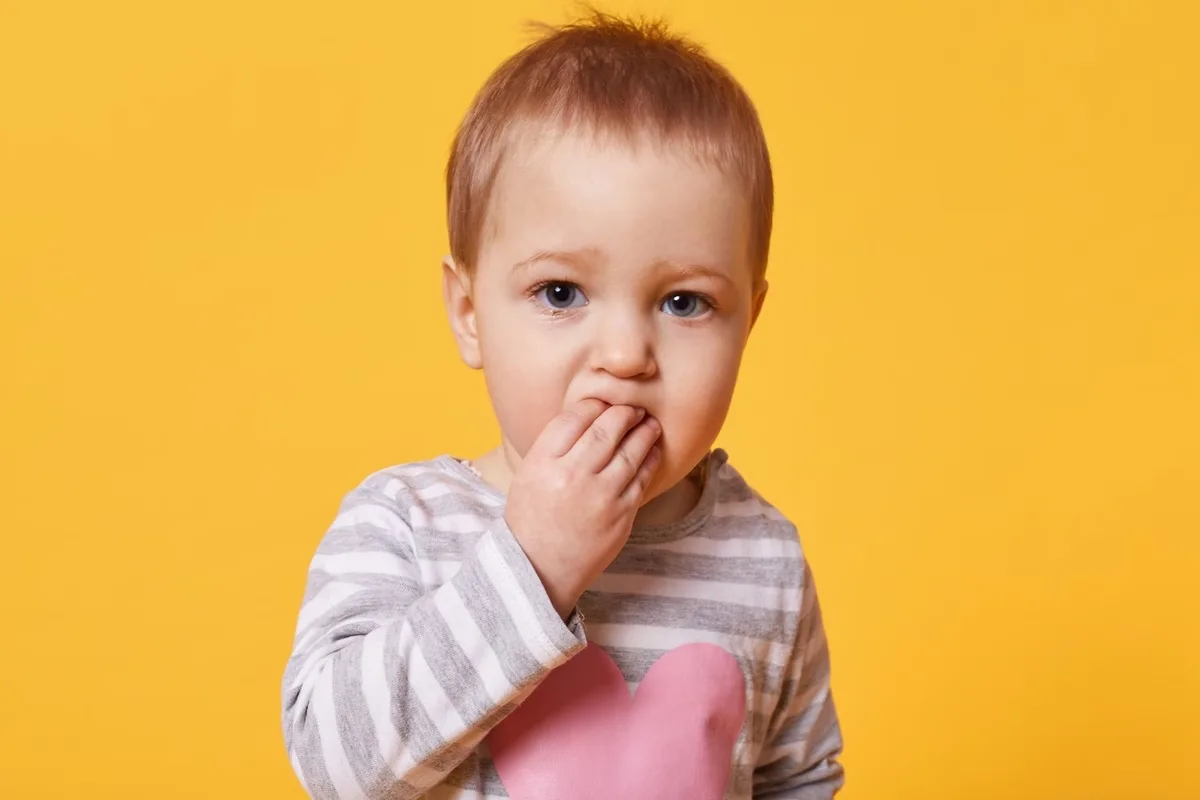Biting in early childhood, a phase that catches many parents and caregivers off guard. One minute your toddler is playing nicely, and the next, they’ve bitten a friend. While it might seem shocking, biting is pretty common among little ones. However, it doesn’t mean your child is intentionally being mean.
Self-control is not yet available and vital language skills are still developing. So what’s behind this biting behavior, and what can you do about it? In this article, we’ll break down why kids might bite. We will also share some strategies to help you and the staff involved in child care to handle it, turning those little chompers towards more positive ways of communicating. After reading this article, you’ll definitely know how to stop a child from biting at daycare!
Exploring the Causes of Toddler Biting
Sadly, most people still believe that challenging behaviors in early childhood are intentional, although consistent research points to this being very unlikely. This is the main reason why punishments are still common responses to bend behavior. Yet, this approach is not the one that will help them learn what they should do or prevent biting behavior from happening. Some parents react impulsively because they are shocked. Why do toddlers bite, kick, or throw objects that can hurt others? Are biting incidents really aggressive behavior?
Let’s take a look at the toddler’s brain. They just found their feet and became autonomous. They have an inner drive to learn and want nothing to stand in their way. Unfortunately for them, this is the same time when parents set the first rules and boundaries. It’s also a time when the child starts to understand the consequences better. However, the part of the brain that handles emotions, patience, and impulse control is still under construction. These abilities will consolidate later through experimenting with the cause and effect of actions. It will be a skill that grows with parents’ and caregivers’ modeling proper behavior. It continues with the enhancement of language skills, and with the child becoming self-aware.
How to stop a child from biting at daycare? First, by acknowledging the fact that this is not an intentional behavior. For it to be so, the child should have an understanding of the fact that it hurts others (highly developed empathy), that the consequences will always be the same (consistent response), and have the ability to think and stop the behavior by choosing another strategy to deal with big emotions (good impulse control). None of these milestones are achieved or are at the disposal of a 2-year-old.
👉 Curious about the signs of a spoiled child and the potential short and long-term effects of overindulgent parenting? Delve into our article for a deeper understanding.
How to Stop a Child from biting at Daycare: Strategies for Prevention and Intervention
For small kids, especially those going through the teething phase, the solution might be as simple as offering teething rings. They can satisfy the need to chew that comes from those emerging teeth.
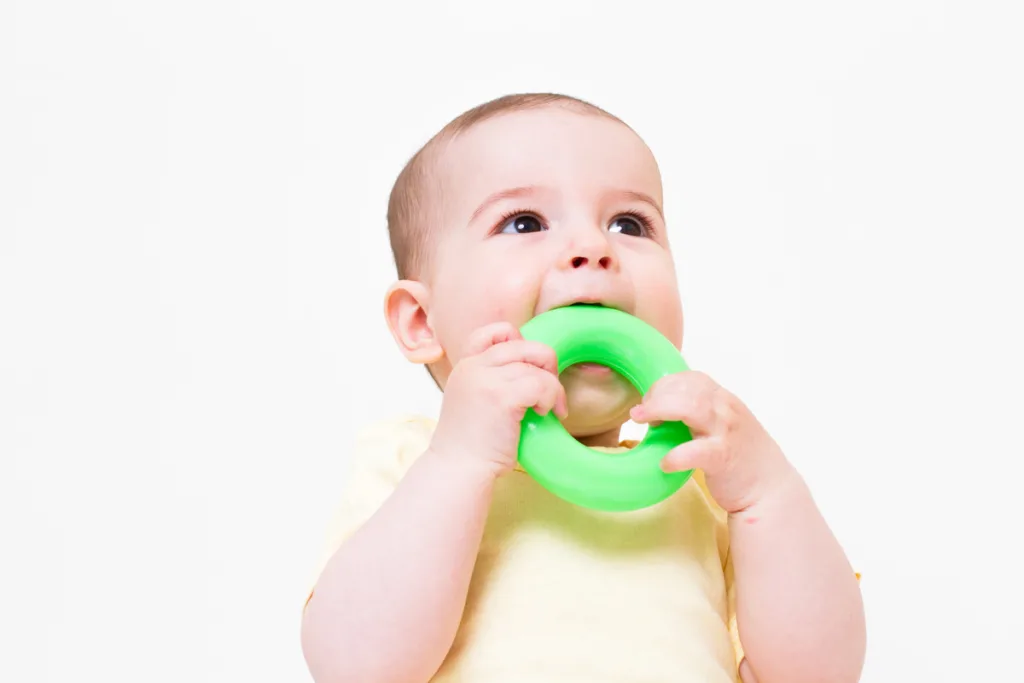
Credit: Freepik
Older toddlers, on the other hand, can grasp more complex instructions and are often better at understanding consequences. With consistent guidance, they can learn to adjust their behavior. While techniques like a timeout, redirection of attention, or a change the environment may be helpful, they’re not necessarily the first, best, or most effective pieces of the puzzle. Here are some methods recommended by child development specialists on how to stop a child from biting at daycare:
- Respond calmly: Reacting with impulsivity or punishment can create a fearful response, which may not help the child understand what they did wrong. Take a deep breath and approach the situation calmly, firmly, and kindly. If necessary, remove the child from the conflict zone, but do it in a way that doesn’t create additional distress.
- Address separation anxiety: Separation anxiety can trigger biting; for example, a child might bite when feeling overwhelmed by parents’ departure after being dropped off at daycare. In these circumstances, caregivers can help by creating reassuring routines, offering comfort items, or even providing a special goodbye ritual.
- Avoid labelling: When a child is labeled as “the biter” of a group, it can actually cause more problems. This label may draw attention to the behavior and make the child think it’s part of who they are, increasing the frequency or severity of biting.
- Provide Consistent Consequences: If a child understands that a particular behavior will consistently result in a particular consequence, they will eventually make the connection between cause and effect and adjust their behavior accordingly. This doesn’t mean punishment but rather a logical response to the behavior. For example, if a child bites because they want a toy, then they don’t get the toy.
- Model Behavior: Children learn by observing adults. Show them through your behavior how to handle frustration, how to be gentle, and how to communicate effectively. Don’t use biting to teach a lesson of pain and how it feels on others, and refrain from using it during play. Some children who bite do it by copying behavior.
- Have Patience: These skills take time to develop. Just as you wouldn’t expect a toddler to run before they can walk, don’t expect them to have perfect control over their emotions and impulses.
1. Collaborative Approach: Parents and Daycare Staff
The consistency between home and daycare provides a seamless experience for the child. When everyone reacts the same way to the behavior and encourages the same alternatives, it reinforces learning.

Credit: Freepik
The issue on how to stop a child from biting at daycare is in both the parents and caretakers hands. Sharing strategies and agreeing on consistent methods for handling biting can help the parent and the care provider create a unified approach to dealing with this common behavior in young children. For example, if a child bites out of frustration over a toy, both parents and daycare staff could consistently encourage the use of words or signs like “please” or “help me” instead of biting and respond in the same way if biting occurs.
If a child bites when overwhelmed, caregivers at home and daycare might recognize the signs and provide a quiet space or a comforting object. This will ensure that the child receives the same understanding and care in both settings. Biting behavior may be associated with moments when the child is hungry or tired. Maintaining a consistent eating and sleeping routine across both environments ensures the child’s needs are met and reduces the likelihood of biting.
This collaborative approach, based on open communication and effective supervision, reinforces the child’s learning. It ensures that they don’t receive mixed or confusing signals about appropriate behavior.
2. Teaching Alternatives to Biting
If you are looking for an answer to the question ‘how to stop a child from biting at daycare,’ you should also think about offering alternatives for them to express themselves. The use of storybooks and games offers a gentle and engaging way to explore complex subjects like empathy with toddlers. Through relatable characters and scenarios, children can begin to understand how others feel and why biting might hurt someone. By connecting these lessons to real-life situations and encouraging active participation, you can make the concepts of empathy, problem-solving, and emotional management more tangible and relevant to your little one.
- Help them communicate: Instead of biting, what would you like the child to do? Teach them words or signs to express their feelings or needs. Encourage them to use these tools when they feel the urge to bite.
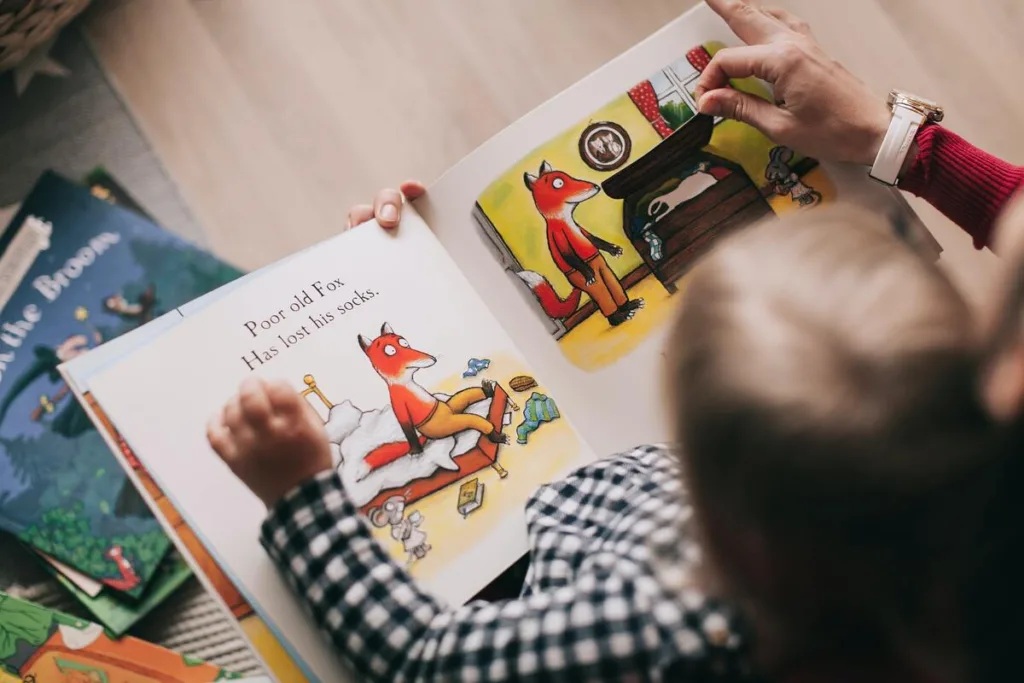
Photo by Lina Kivaka on Pexels
- Teach empathy with storybooks: Select storybooks that are suitable for toddlers, with simple language and colorful illustrations. Look for books that deal specifically with biting, emotions, or empathy. Some popular titles might include “Teeth Are Not for Biting” by Elizabeth Verdick or “No Biting, Louise” by Margie Palatini.
- Role Play can send the message: For small children, playtime is a wonderful time for learning. Using stuffed animals, you might role-play a situation where one animal wants a toy and the other feels like biting. Guide them through a more empathetic response. For example, you might ask, “How do you think the little bunny feels after being bitten?” or “What do you think the teddy bear wants when he reaches for the toy?”
- Be consistent: In the education of young children, repetition is key. Revisit the same stories, games, or real-life situations that teach about empathy and the natural consequences of biting or being bitten, until behavior stops occurring.
3. Consistency and Positive Reinforcement
Negative behavior like biting at daycare often leads to negative attention towards both the child and their parents. However, the situation isn’t hopeless, and the behavior doesn’t have to define the child. Reasearch indicates that using positive reinforcement can be a great solution when struggling with how to stop a child from biting at daycare. Instead of focusing on the negative aspects or waiting anxiously for the behavior to repeat, when biting becomes a problem, parents and caregivers can embrace positive reinforcement as a powerful tool. This means actively looking for and celebrating positive behavior, small victories and progress.
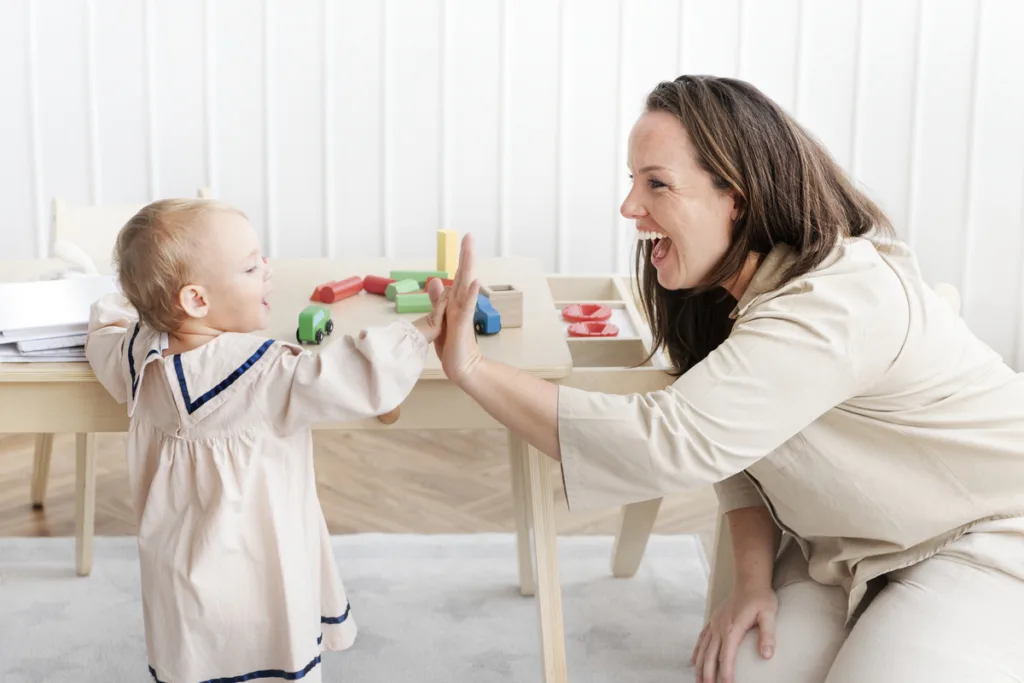
Credit: Freepik
For example, if a child who previously bit others out of excitement now uses words to express feelings or seeks a hug, that’s a significant improvement worth celebrating. When the child uses “please” and waits patiently to get a toy they want, instead of biting, it’s also a moment worthy of positive attention. Acknowledging and praising these small victories can be more powerful than punishments or negative reactions.
This approach encourages them to continue handling situations and impulses well, it builds their confidence and also fosters an environment where they feel supported rather than put down.
When Biting at Daycare Becomes a Problem
For some toddlers, even with consistent supervision, the urge to bite can be overwhelming. This behavior can be a method of sensory stimulation or the best way at hand to release frustration. But how can parents and caregivers determine when biting is a normal phase of development, and when it becomes a significant issue?
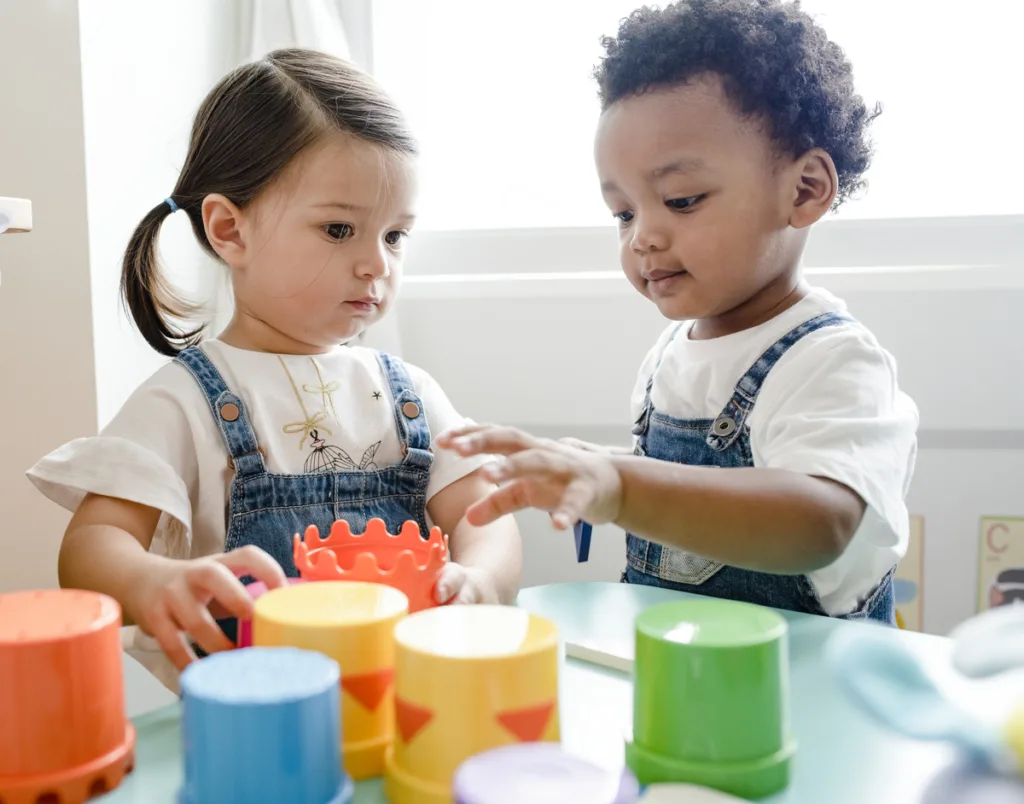
Credit: Freepik
Frequent and persistent biting incidents, such as biting multiple times a week at daycare or consistently biting siblings at home, indicate a problem that’s more serious than an occasional reaction. This is especially concerning if the biting escalates rather than decreases over time, moving from gentle nibbles to breaking the skin.
When biting reaches the point of causing physical injury it’s clearly a sign of a serious issue. Leaving bruises or lasting marks or becoming socialy isolated by other children that begin to avoid or fear the child who bites are noteworthy concerns.
Additionally, if a child consistently uses biting as the primary way to express frustration or anger, such as biting every time a toy is taken away, it could indicate a difficulty with emotional regulation.
In such significant cases, when biting at daycare becomes a problem, professional intervention like consulting with a child development specialist or behavioral therapist may be necessary to understand and address the underlying causes of the behavior.
👉 Sometimes, children can also start to be aggresive with themselves. Discover the reasons why children sometimes turn their aggression inward, and learn effective techniques to put an end to this behavior. Read ‘Why Kids Hit Themselves & Strategies to Prevent It’ and gain valuable insights into both the causes and solutions for this issue.
Conclusion
Biting behavior in young children can be either an isolated occurrence or a concerning pattern, depending on its frequency and context. Causes range from curiosity and teething to frustration and a need for sensory stimulation. It’s vital to recognize that most toddlers lack the emotional maturity to intentionally harm others and are instead exploring their world and learning to handle complex emotions.
Prevention requires a compassionate approach, understanding the underlying causes, and avoiding labeling children negatively. Consistent responses from parents, caregivers, and daycare providers can help children learn acceptable behavior.
When biting at daycare becomes a problem, it may be time for professional intervention. The goal is not just to stop biting but to foster empathy, compassion, and social skills that will help them throughout their lives.
Are you looking to navigate the challenging yet rewarding journey of parenting with science-backed insights? Join our online events that tackle various aspects of child development, from infancy to adolescence. Engage with experts, gain valuable knowledge, and empower yourself with evidence-based strategies to nurture your child’s growth and well-being. You’ll also learn how to stop a child from biting at daycare from an experienced parenting expert. Sign up today!
Need an answer to a parenting question right now? Our friendly AI assistant, Sophie, is ready to help.
References
Blair, S. C., Fox, L., & Lentini, R. (2010). Use of Positive Behavior Support to Address the Challenging Behavior of Young Children Within a Community Early Childhood Program. Topics in Early Childhood Special Education. https://doi.org/10.1177/0271121410372676
Byington, T. 2006, Giving R Best 2 Kids: Development & Behavior – Biting, Extension | University of Nevada. https://extension.unr.edu/publication.aspx?PubID=4895
Poltrack, E. (2014, November 1). Why do we want to bite cute things, like adorable newborn babies? Scientific American. https://www.scientificamerican.com/article/why-do-we-want-to-bite-cute-things-like-adorable-newborn-babies/
Rosset, E., & Rottman, J. (2014). The Big ‘Whoops!’ in the Study of Intentional Behavior: An Appeal for a New Framework in Understanding Human Actions. Journal of Cognition and Culture, 14(1-2), 27-39. https://doi.org/10.1163/15685373-12342108
Stanford Medicine. (n.d.). Biting. Stanford Medicine Children’s Health https://www.stanfordchildrens.org/en/topic/default?id=biting-90-P02180
